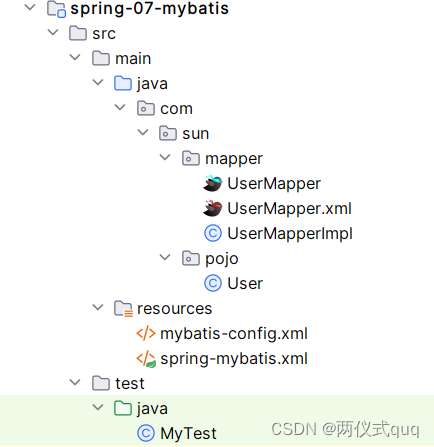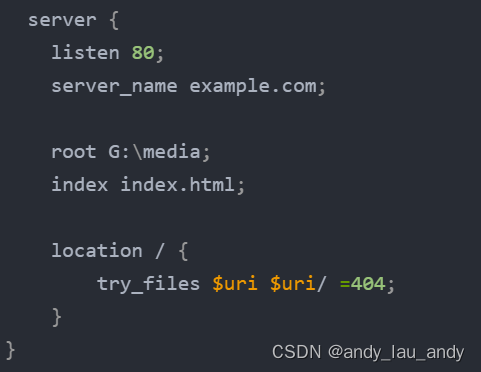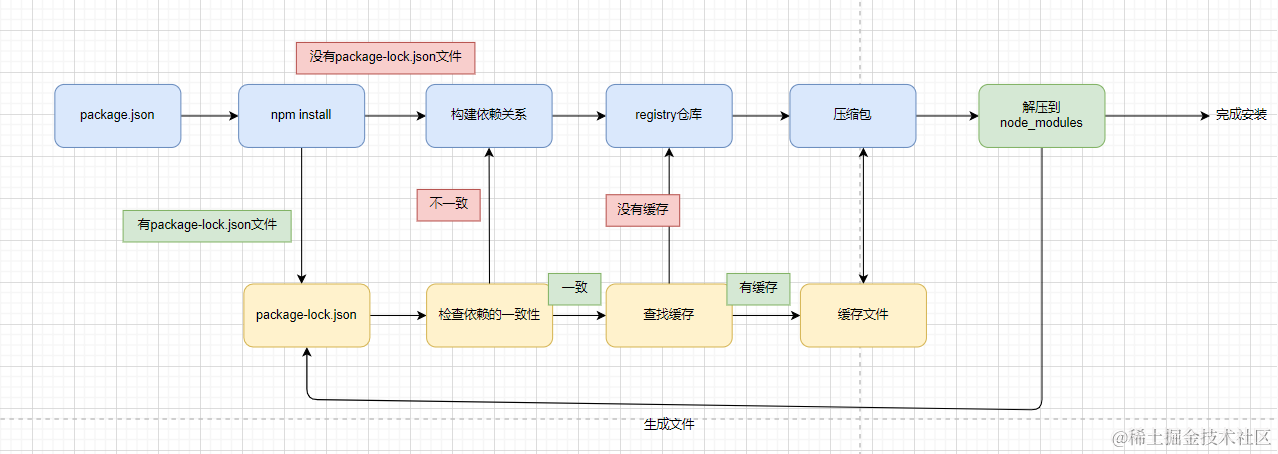在 CentOS 上安装和配置 ProxyChains,可以按照以下步骤进行操作:
-
sudo yum update -
sudo yum install proxychains-ng -
sudo vi /etc/proxychains.conf -
在配置文件中,找到并注释掉
dynamic_chain行,并取消注释strict_chain行。#dynamic_chain strict_chain -
在配置文件的末尾添加代理服务器的信息。根据你的代理服务器类型选择适当的配置方式:
-
对于 SOCKS5 代理服务器,添加以下行,并将
proxy_address和proxy_port替换为你的代理服务器地址和端口号:proxychains4 -f /path/to/proxychains.conf -D -n -s proxy_address proxy_port -
对于 HTTP 代理服务器,添加以下行,并将
proxy_address和proxy_port替换为你的代理服务器地址和端口号:http proxy_address proxy_port -
对于 SOCKS4 代理服务器,添加以下行,并将
proxy_address和proxy_port替换为你的代理服务器地址和端口号:socks4 proxy_address proxy_port -
对于代理服务器需要身份验证的情况,你可以在相应的行后面添加用户名和密码:
http proxy_address proxy_port username password
配置文件:
cat /etc/proxychains.conf # proxychains.conf VER 4.x # # HTTP, SOCKS4a, SOCKS5 tunneling proxifier with DNS. # The option below identifies how the ProxyList is treated. # only one option should be uncommented at time, # otherwise the last appearing option will be accepted # #dynamic_chain # # Dynamic - Each connection will be done via chained proxies # all proxies chained in the order as they appear in the list # at least one proxy must be online to play in chain # (dead proxies are skipped) # otherwise EINTR is returned to the app # strict_chain # # Strict - Each connection will be done via chained proxies # all proxies chained in the order as they appear in the list # all proxies must be online to play in chain # otherwise EINTR is returned to the app # #round_robin_chain # # Round Robin - Each connection will be done via chained proxies # of chain_len length # all proxies chained in the order as they appear in the list # at least one proxy must be online to play in chain # (dead proxies are skipped). # the start of the current proxy chain is the proxy after the last # proxy in the previously invoked proxy chain. # if the end of the proxy chain is reached while looking for proxies # start at the beginning again. # otherwise EINTR is returned to the app # These semantics are not guaranteed in a multithreaded environment. # #random_chain # # Random - Each connection will be done via random proxy # (or proxy chain, see chain_len) from the list. # this option is good to test your IDS :) # Make sense only if random_chain or round_robin_chain #chain_len = 2 # Quiet mode (no output from library) #quiet_mode ## Proxy DNS requests - no leak for DNS data # (disable all of the 3 items below to not proxy your DNS requests) # method 1. this uses the proxychains4 style method to do remote dns: # a thread is spawned that serves DNS requests and hands down an ip # assigned from an internal list (via remote_dns_subnet). # this is the easiest (setup-wise) and fastest method, however on # systems with buggy libcs and very complex software like webbrowsers # this might not work and/or cause crashes. proxy_dns # method 2. use the old proxyresolv script to proxy DNS requests # in proxychains 3.1 style. requires `proxyresolv` in $PATH # plus a dynamically linked `dig` binary. # this is a lot slower than `proxy_dns`, doesn't support .onion URLs, # but might be more compatible with complex software like webbrowsers. #proxy_dns_old # method 3. use proxychains4-daemon process to serve remote DNS requests. # this is similar to the threaded `proxy_dns` method, however it requires # that proxychains4-daemon is already running on the specified address. # on the plus side it doesn't do malloc/threads so it should be quite # compatible with complex, async-unsafe software. # note that if you don't start proxychains4-daemon before using this, # the process will simply hang. #proxy_dns_daemon 127.0.0.1:1053 # set the class A subnet number to use for the internal remote DNS mapping # we use the reserved 224.x.x.x range by default, # if the proxified app does a DNS request, we will return an IP from that range. # on further accesses to this ip we will send the saved DNS name to the proxy. # in case some control-freak app checks the returned ip, and denies to # connect, you can use another subnet, e.g. 10.x.x.x or 127.x.x.x. # of course you should make sure that the proxified app does not need # *real* access to this subnet. # i.e. dont use the same subnet then in the localnet section #remote_dns_subnet 127 #remote_dns_subnet 10 remote_dns_subnet 224 # Some timeouts in milliseconds tcp_read_time_out 15000 tcp_connect_time_out 8000 ### Examples for localnet exclusion ## localnet ranges will *not* use a proxy to connect. ## note that localnet works only when plain IP addresses are passed to the app, ## the hostname resolves via /etc/hosts, or proxy_dns is disabled or proxy_dns_old used. ## Exclude connections to 192.168.1.0/24 with port 80 # localnet 192.168.1.0:80/255.255.255.0 ## Exclude connections to 192.168.100.0/24 # localnet 192.168.100.0/255.255.255.0 ## Exclude connections to ANYwhere with port 80 # localnet 0.0.0.0:80/0.0.0.0 # localnet [::]:80/0 ## RFC6890 Loopback address range ## if you enable this, you have to make sure remote_dns_subnet is not 127 ## you'll need to enable it if you want to use an application that ## connects to localhost. localnet 127.0.0.0/255.0.0.0 localnet ::1/128 ## RFC1918 Private Address Ranges # localnet 10.0.0.0/255.0.0.0 # localnet 172.16.0.0/255.240.0.0 # localnet 192.168.0.0/255.255.0.0 ### Examples for dnat ## Trying to proxy connections to destinations which are dnatted, ## will result in proxying connections to the new given destinations. ## Whenever I connect to 1.1.1.1 on port 1234 actually connect to 1.1.1.2 on port 443 # dnat 1.1.1.1:1234 1.1.1.2:443 ## Whenever I connect to 1.1.1.1 on port 443 actually connect to 1.1.1.2 on port 443 ## (no need to write :443 again) # dnat 1.1.1.2:443 1.1.1.2 ## No matter what port I connect to on 1.1.1.1 port actually connect to 1.1.1.2 on port 443 # dnat 1.1.1.1 1.1.1.2:443 ## Always, instead of connecting to 1.1.1.1, connect to 1.1.1.2 # dnat 1.1.1.1 1.1.1.2 # ProxyList format # type ip port [user pass] # (values separated by 'tab' or 'blank') # # only numeric ipv4 addresses are valid # # # Examples: # # socks5 192.168.67.78 1080 lamer secret # http 192.168.89.3 8080 justu hidden # socks4 192.168.1.49 1080 # http 192.168.39.93 8080 # # # proxy types: http, socks4, socks5, raw # * raw: The traffic is simply forwarded to the proxy without modification. # ( auth types supported: "basic"-http "user/pass"-socks ) # [ProxyList] # add proxy here ... # meanwile # defaults set to "tor" #socks4 127.0.0.1 9050 http Proxy_IP Proxy_Port -
现在,你已经成功安装并配置了 ProxyChains。你可以在命令行中使用 proxychains4 命令来运行其他命令并通过代理服务器进行连接。例如:
proxychains4 git clone https://github.com/your_username/your_repository.git
请确保替换相应的代理服务器地址、端口号以及 git 克隆命令的 URL。
proxychains4 git clone https://github.com/xxx/xxx.git
[proxychains] config file found: /etc/proxychains.conf
[proxychains] preloading /usr/lib64/proxychains-ng/libproxychains4.so
[proxychains] DLL init: proxychains-ng 4.16
Cloning into 'Fooocus'...
[proxychains] DLL init: proxychains-ng 4.16
[proxychains] Strict chain ... IP:Port ... IP:Port ... OK
[proxychains] DLL init: proxychains-ng 4.16
[proxychains] Strict chain ... IP:Port ... IP:Port ... OK
remote: Enumerating objects: 1612, done.
remote: Counting objects: 100% (834/834), done.
remote: Compressing objects: 100% (243/243), done.
[proxychains] DLL init: proxychains-ng 4.16
remote: Total 1612 (delta 710), reused 622 (delta 581), pack-reused 778
Receiving objects: 100% (1612/1612), 22.84 MiB | 382.00 KiB/s, done.
Resolving deltas: 100% (982/982), done.
[proxychains] DLL init: proxychains-ng 4.16
原文地址:https://blog.csdn.net/holyvslin/article/details/132885252
本文来自互联网用户投稿,该文观点仅代表作者本人,不代表本站立场。本站仅提供信息存储空间服务,不拥有所有权,不承担相关法律责任。
如若转载,请注明出处:http://www.7code.cn/show_28828.html
如若内容造成侵权/违法违规/事实不符,请联系代码007邮箱:suwngjj01@126.com进行投诉反馈,一经查实,立即删除!
声明:本站所有文章,如无特殊说明或标注,均为本站原创发布。任何个人或组织,在未征得本站同意时,禁止复制、盗用、采集、发布本站内容到任何网站、书籍等各类媒体平台。如若本站内容侵犯了原著者的合法权益,可联系我们进行处理。





